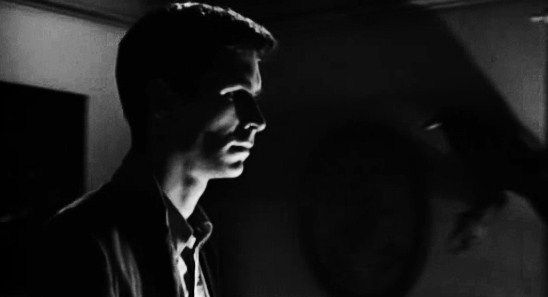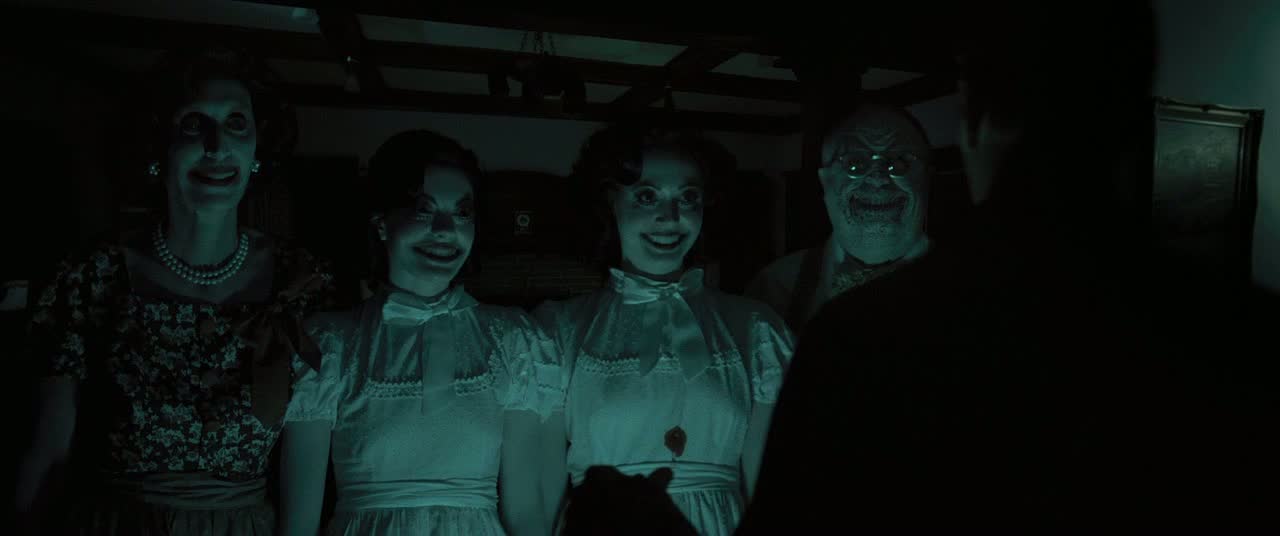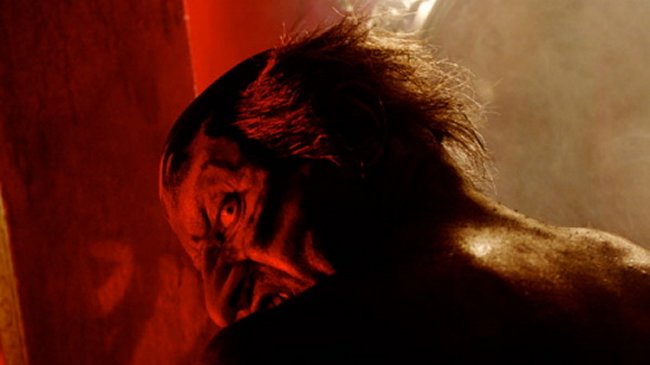Lighting and Colour
Lighting helps convey mood and atmosphere. It can be used to guide the audiences attention to a particular object, person, emotion or gesture. Colour in scenes have different connotations to them and can give different interpretations of the scene. Both lighting and colour are very important conventions as it can effect the whole outcome of the film. With these, it can change the mood from a happy setting to a more disturbing or uncomfortable setting.
Angles of lighting:
- Under lighting: Lighting comes from below the person. This tends to have a distorting effect on the character. In this shot of the main character in "Psycho" it is clear that there is under lighting being used. This is creating a more disturbing representation of the character for the audience.
- Top lighting: Light comes from above, highlighting features of characters. In this scene, due to the joker being questioned there is top lighting being used. This is to emphasise the main characters portrayal as the antagonist. The top light suggests the focus on this particular character so the audience is clear of his wrong doings.
- Back lighting: Behind the character, creates silhouettes. In the film "The Night Walker" back lighting is used. This highlights the silhouette that it creates as they want the audience to focus on this specific character.
Types of lighting:
- Low key: The lighting is dark with small areas of light, creates shadows. In the film "Insidious" low key lighting is being used in order to create a more chilling and thrilling atmosphere for the audience. This keeps the audience engaged and curious.
- High key: Lighting appears more natural and realistic in our eyes and the lighting effect is heightened. In the film "Scream" high key lighting is used when they are at school. This makes the scene more realistic and also unexpected. High key lighting is rare in thriller films so its not conventional to see it much. This scene helps to represent how normal the characters are when in fact the antagonist is sitting among them.

In thrillers, conventional lighting is usually low key, under lighting and back lighting. Low key is used to create a dark setting which usually builds tension for the audience. The under lighting is usually used to represent the character in an disturbing way and the back lighting is conventional as silhouettes are associated with chilling scenes. These elements help to develop the film into a thriller.
 Colour in scenes:
Colour in scenes:
Black: In thriller films the colour black is used the most. In "Batman" the joker is surrounded in black. The darkness creates a creepy and alarming setting for the audience as the only thing clear is his face, leaving the rest unexpected.
White: In thriller films the colour white is used to represent the protagonists most of the time. In the film "Black Swan" the colour white creates a clear understanding of what is going on. It also represents purity for the character and innocence.

Blue/Navy: In thriller films the colours blue/navy sets a more spooky or creepy scene. The dark blue clouds in this "Batman" scene suggest that something bad is about to happen.

Green: The colour green in thriller films is usually used in order to create a more disturbing scene. This colour seems off putting and vile. From looking at this image from "Insidious" it is evident that the green surrounding the antagonists face is trying to be emphasised.
Colours in conventional thrillers are usually black, white, red, blue and green. These colours are conventional as in most thriller films we see the representations of them. Black, red, blue and green are used in order to portray the setting in a negative way whilst the white portrays a more positive setting. It is very important for these colours to be focused on as it can change the outlook of the film. By putting the right colour with the right character it can help the audience be clear on who is good or bad.
Thriller scene analysis:
In this scene of "Insidious" the lighting overall is low-key. This is used in order to build tension for the audience and create fear. About 6 seconds into this clip there is top lighting being used in order to focus on the family. This helps the audience understand the target. At 1:41 there is a close up onto one of the antagonists face and there is under lighting being used. This enhances the characters face and creates a more creepy, disturbing and alarming look for the audience. Moreover, at 1:50 back lighting is being used as the character is walking backwards. This is used to build stress for the audience as they do not know what is going to happen. It also creates a silhouette to focus more on the main character. The colours in this scene are mostly black, green and blue. The black gives an evil impression whilst the green and blue focus more on the disturbing parts such as the close ups of the antagonists.
In this scene of "Insidious" the lighting overall is low-key. This is used in order to build tension for the audience and create fear. About 6 seconds into this clip there is top lighting being used in order to focus on the family. This helps the audience understand the target. At 1:41 there is a close up onto one of the antagonists face and there is under lighting being used. This enhances the characters face and creates a more creepy, disturbing and alarming look for the audience. Moreover, at 1:50 back lighting is being used as the character is walking backwards. This is used to build stress for the audience as they do not know what is going to happen. It also creates a silhouette to focus more on the main character. The colours in this scene are mostly black, green and blue. The black gives an evil impression whilst the green and blue focus more on the disturbing parts such as the close ups of the antagonists.
Conclusion:
From looking at the different types of lighting and colour, I am now able to understand what is appropriate for my thriller. I would prefer to use mostly low-key lighting to maintain a spooky atmosphere and also would like to use under lighting to make my antagonists have a distorting effect. The colours I would like to stick to are mainly dark as they can give unpleasant, vile and wicked representations to the audience.





Katie, a really good post where you present your work very clearly, and discuss the impact of lighting and colour well to a scene. You also provide some good examples that have been analysed also :)
ReplyDeleteTo improve;
-when you analyse your scene, refer to the audience response created from the lighting techniques.